Anti-tank capabilities of the Soviet self-propelled artillery systems SU-152 and ISU-152
In the memoirs and technical literature on the Great Patriotic War, quite often high assessments are given of the anti-tank capabilities of the Soviet self-propelled artillery systems SU-152 and ISU-152. At the same time, the authors, who extol the high damaging effect of a 152-mm projectile when exposed to enemy armored vehicles, completely forget about the other characteristics of the large-caliber guns, as well as what heavy self-propelled guns were designed for.
After a failure with a heavy assault a tank KV-2, which was actually a self-propelled gun with a 152-mm howitzer mounted in a rotating turret, in conditions when our troops fought heavy defensive battles, there was no special need for heavy self-propelled guns. In connection with the seizure of the strategic initiative, in the conditions of offensive military operations, the armored units of the Red Army needed qualitatively new models of equipment. Taking into account the existing experience of operating the SU-76M and SU-122, the question arose of creating assault self-propelled gun mounts armed with large-caliber guns. Such self-propelled guns were primarily intended for the destruction of capital fortifications during the breakthrough of a well-prepared enemy defense. During the planning of the offensive operations of 1943, it was expected that Soviet troops would have to break into a long-term deeply echeloned defense with concrete pillboxes. Under these conditions, the need arose for heavy self-propelled guns with weapons similar to the KV-2. However, by that time, the production of 152 mm M-10 howitzers had been discontinued, and the KV-2 itself, which had not worked very well, were practically all lost in battle. After comprehending the experience of operating self-propelled gun mounts, the designers came to understand that from the point of view of obtaining optimal weight and size characteristics, placing a large-caliber gun in an armored cabin is more optimal than in a rotating turret. The abandonment of the tower allowed to increase the volume of the fighting compartment, reduce weight and reduce the cost of the car.
SU-152 heavy self-propelled artillery mount
At the end of January 1943, the construction of the first prototype of the SU-152 heavy self-propelled guns was completed at the Chelyabinsk Kirov Plant (ChKZ), armed with the 152-mm ML-20S gun - a tank modification of the highly successful 152-mm howitzer gun mod. 1937 (ML-20). The gun had a horizontal firing sector of 12 ° and elevation angles from −5 to + 18 °. The ammunition included 20 rounds of separate shell loading. During the tests for rate of fire when using first-stage piling, a result of 2,8 rds / min was achieved. But the real combat rate did not exceed 1-1,5 rds / min. The firing range using the telescopic sight ST-10 on visually observable targets reached 3,8 km. On the machines of the first batch, the T-9 (TOD-9) sight was used, originally developed for the KV-2 heavy tank. For firing from closed positions there was a panoramic PG-1 sight with a panorama of Hertz. The maximum firing range is 6,2 km. Theoretically, it was possible to fire at a long range, but shooting from closed positions for a number of reasons, which will be discussed below, self-propelled guns were rarely practiced.
The base for the new self-propelled gun was the KV-1s tank. The layout of the self-propelled guns was the same as that of most Soviet self-propelled guns of that time. The fully armored hull was divided into two parts. The crew, guns and ammunition were located in front in the armored cabin, which combined the fighting compartment and the control compartment. The engine and transmission were located in the stern of the car. Three crew members were to the left of the gun: in front of the driver, then the gunner and the rear loader, and the other two, the commander of the car and the castle, on the right. One fuel tank was located in the engine compartment, and the other two in the combat, that is, in the inhabited space of the car.
In terms of protection, the SU-152 almost corresponded to the KV-1s tank. The thickness of the frontal armor of the cabin was 75 mm, the forehead of the hull was 60 mm, the sides of the hull and the hull were 60 mm. The combat weight is 45,5 tons. The V-2K diesel engine with an operational power of 500 hp clocked the self-propelled gun on the highway to 43 km / h, the speed on the march along a dirt road did not exceed 25 km / h. Cruising on the highway - up to 330 km.
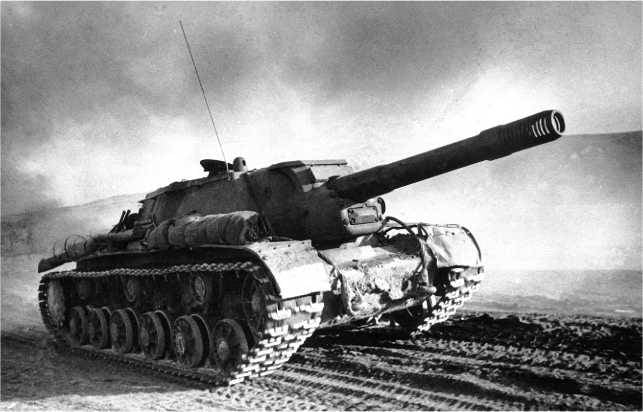
In February 1943, military representatives accepted the first batch of 15 vehicles. February 14, 1943, simultaneously with the adoption of the SU-152, issued a decree GKO No. 2889 "On the formation of heavy self-propelled artillery regiments of the RGK." The document provided for the formation of 16 heavy self-propelled artillery regiments (TSAP). Initially, the TSAP had 6 batteries, two units each. Subsequently, based on the experience of military operations, the organizational and staffing structure of the TSAP was revised towards unification with the states of regiments armed with SU-76M and SU-85. According to the new staffing table, the TSAP became 4 batteries with three self-propelled guns each, the number of personnel of the regiment was reduced from 310 to 234 people, and the “command" KV-1s tank and the armored car BA-64 were introduced into the control platoon.
The combat activity of the TSAP was originally planned by analogy with artillery regiments armed with 152 mm ML-20 howitzers. However, in practice, the SU-152 gunners most often shot at visually observable targets, in this case, advanced artillery observers and reconnaissance spotters in the TSAP were not much sought after. Self-propelled guns usually supported the advancing tanks with fire, moving behind them at a distance of 600-800 m, firing direct fire at enemy fortifications, destroying defense units, or acting as an anti-tank reserve. Thus, the tactics of TSAP actions differed little from the tactics of tank units and SAPs with SU-76M and SU-85.
Some TSAP on the SU-152 retained the old staff, while others were transferred to a new one, remaining with the previous material part. Due to the lack of SU-152, there were cases when the TSAPs were equipped with other machines, for example, reconditioned KV-1s or new KV-85. And vice versa, when the SU-152 entered the heavy tank regiments instead of the tanks lost in battle or having gone to repair tanks. So in the Red Army appeared separate heavy tank regiments, and subsequently this practice took place until the end of the war. At the final stage of the war in the TSAP, formed in 1943-1944, in parallel with the SU-152, ISU-122 and ISU-152 could be operated.
Despite the fact that the first 152 mm installations were delivered back in February 1943, they began to enter the troops only in April. A lot of time was spent on eliminating manufacturing defects and "children's sores." In addition, according to the results of the first combat use of the SU-152 at the front, it turned out that when firing inside the fighting compartment, a large amount of powder gases accumulated, which led to a loss of crew performance. This became known not only at the GABTU, but also at the highest level. The question of solving this problem on September 8, 1943, during the demonstration in the Kremlin of new types of armored vehicles, was personally raised by Stalin. In accordance with his decree, two fans began to be installed on the roof of the fighting compartment of the SU-152.
Claims for visibility from the fighting compartment came from the army. Periscope instruments had large areas of unobservable space, which often became the cause of machine losses. Many complaints were regarding the small ammunition. In units, the ammunition was increased to 25 rounds by placing an additional 5 rounds under the gun. These shells and charges lay on the floor, secured by wooden makeshift blocks. Loading the new ammunition was laborious and physically difficult operation, which took more than 30 minutes. The presence of a fuel tank inside the fighting compartment in the event of penetration of armor by an enemy shell often became the cause of the death of the entire crew.
However, of the first three Soviet self-propelled assault launchers launched into serial production after the outbreak of war, this vehicle turned out to be the most successful. The SU-152, in contrast to the SU-76, did not have obvious defects associated with the general design of the motor-transmission group. In addition, the fighting compartment of a self-propelled gun built on the chassis of the KV-1s heavy tank was more spacious than on the SU-122. The design of the combat vehicle itself, equipped with a very powerful 152-mm gun, turned out to be quite successful.
As far as we know, the combat debut of the SU-152 took place on Kursk, where there were two TSAP. During the period from July 8 to July 18, the 1541st TSAP reported on 7 destroyed Tigers, 39 medium tanks and 11 enemy self-propelled guns. In turn, the 1529th TSAP on July 8 destroyed and knocked out 4 tanks (including 2 Tigers), as well as 7 self-propelled guns. During the battle on the Kursk Bulge, self-propelled guns, moving behind the tanks, provided fire support to them and fired from closed fire positions. For firing at the enemy, only high-explosive shells were used, armor-piercing 152 mm shells in the ammunition at that time were not available. Due to the fact that there were few direct collisions with German tanks, the losses of self-propelled guns were relatively small. However, it should be understood that the frontal armor of the SU-152 by the middle of 1943 no longer provided adequate protection and could have been pierced by the long-barreled gun of the modernized “four” from 1000 m. Some sources say that the Germans were able to study in sufficient detail the damaged SU-152 in the summer of 1943 .
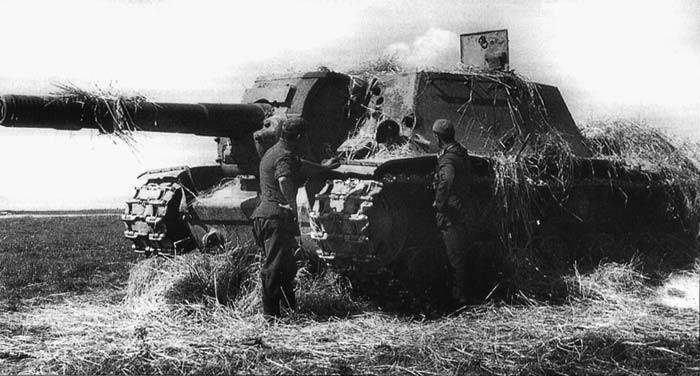
In reports on the results of hostilities among armored vehicles destroyed by the crew of the SU-152, heavy tanks “Tiger” and tank destroyer “Ferdinand” are repeatedly mentioned. Among our soldiers, self-propelled guns SU-152 earned the proud name "St. John's Wort". Due to the fact that only 24 heavy self-propelled guns occasionally participated in the battle, they did not have a special effect on the course of hostilities. But at the same time, it should be recognized that the SU-152 in the summer of 1943 was the only Soviet self-propelled gun capable of confidently hitting heavy German tanks and self-propelled guns at all battle ranges. At the same time, one must understand that the enemy’s losses in reports on combat activities are often greatly exaggerated. If you believe all the reports received from the army, then our tankers and gunners destroyed the "Tigers" and "Ferdinands" several times more than they were built. In most cases, this did not happen because someone wanted to ascribe to themselves non-existent merits, but because of the difficulty of identifying enemy armored vehicles on the battlefield.
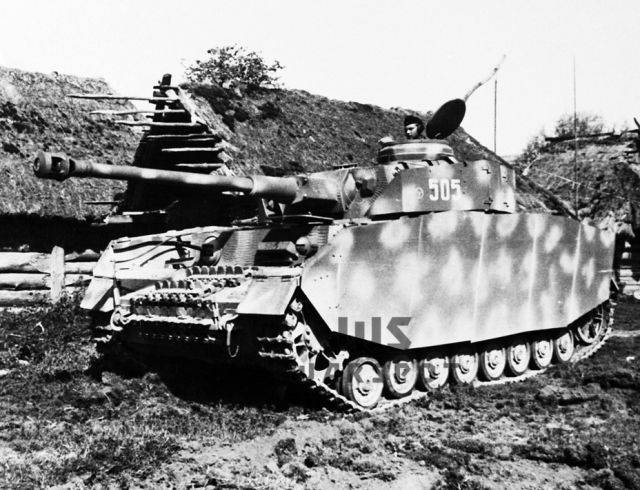
German medium tanks Pz.KpfW.IV of late modifications, equipped with long-barreled guns and anti-cumulative screens hung on board the hull and turret, unrecognizable changed their shape and became like a heavy "Tiger". Since the summer of 1943, all German self-propelled guns with a rear-mounted fighting compartment were called "Ferdinands" in the Red Army. It should also be taken into account that the enemy had a very good service for evacuating damaged tanks from the battlefield. Quite often, the "Tigers" "destroyed" in Soviet reports were successfully restored in the field tank repair shops and again went into battle.
Serial production of the SU-152 lasted until January 1944. In total, 670 self-propelled guns of this type were delivered. The SU-152 was most actively used at the front between the autumn of 1943 and the summer of 1944.
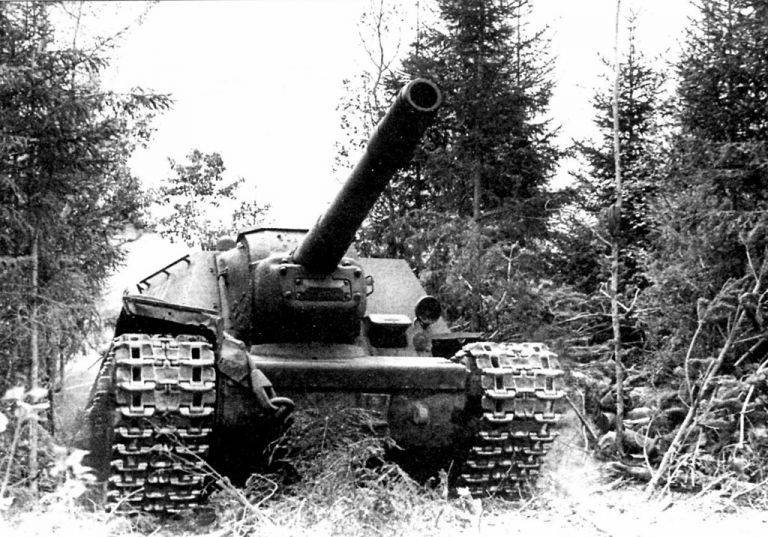
Compared to self-propelled tanks, the SU-152 suffered less casualties from anti-tank artillery fire and enemy tanks. It may seem strange, but a noticeable amount of heavy self-propelled guns was decommissioned due to the full exhaustion of the resource. Apparently, tank repair enterprises, in conditions of saturation of troops with self-propelled guns on the basis of the IS tank, did not want to engage in the laborious restoration of vehicles built on the basis of the discontinued KV-1s. But part of the SU-152, which underwent reconstruction, participated in the hostilities until the surrender of Germany.
Heavy self-propelled artillery mount ISU-152
In November 1943, the ISU-152 heavy self-propelled artillery installation was adopted. However, due to the overloaded production facilities of ChKZ, at first the new self-propelled guns were produced in very small volumes and the SU-152 and ISU-152 were assembled in parallel.
When designing the self-propelled guns ISU-152, created on the basis of the heavy tank IS-85, the operating experience of the SU-152 was taken into account, and the developers tried to get rid of a number of design flaws that were revealed during the combat use. Taking into account the increase in firepower of the German anti-tank artillery, the security of the ISU-152 significantly increased. The thickness of the frontal armor of the hull and wheelhouse was 90 mm. The thickness of the upper part of the hull side and the cabin is 75 mm, the lower part of the hull is 90 mm. Gun mask - 100 mm. In the second half of 1944, the production of machines with a welded front of the hull from rolled armored plates was started instead of a single cast part; the thickness of the armored mask of the gun was increased to 120 mm
The security of the ISU-152 as a whole was not bad. The frontal armor could withstand the penetration of armor-piercing shells fired from the Pak 75 40 mm anti-tank gun and the Kw.K.40 L / 48 tank gun at distances of over 800 m. The self-propelled gun was quite easy to repair. Damaged enemy vehicles in most cases quickly recovered in the field.
The designers paid much attention to improving the reliability of the engine-transmission part of the IS-85 tank and machines manufactured on its basis. The self-propelled guns ISU-152 were equipped with a V-2-IS diesel engine with a maximum power of 520 hp. A vehicle with a combat weight of 46 tons could move along the highway at a speed of 30 km / h. The speed of the dirt road usually did not exceed 20 km / h. Cruising on the highway - up to 250 km.
The main armament, sights and crew remained the same as on the SU-152. But compared with the previous model, the working conditions of the self-propelled guns and the view from the car were improved. The gun had vertical aiming angles from −3 ° to + 20 °, the sector of horizontal aiming was 10 °. Ammunition - 21 shells.
At the end of 1944, a 12,7-mm anti-aircraft machine gun DShK began to be installed on self-propelled guns. At the final stage of the war, a large-caliber anti-aircraft machine-gun mount against the enemy aviation rarely used, but it was very useful during street battles.
In the production process, changes were made to the design of the ISU-152 aimed at improving the combat and operational qualities and reducing the cost of self-propelled guns. After eliminating the "children's sores" ISU-152 has established itself as a very reliable and unpretentious machine. Due to the saturation of the Red Army with anti-tank artillery and the mass production of SU-85, the anti-tank role of the ISU-152 decreased compared to the SU-152. In the second half of 1944, when ISU-152 self-propelled guns appeared at the front in noticeable numbers, enemy tanks began to appear on the battlefield less often, and heavy self-propelled guns were mainly used for their intended purpose - to destroy long-term firing points, make passages in barriers, fire support for advancing tanks and infantry.
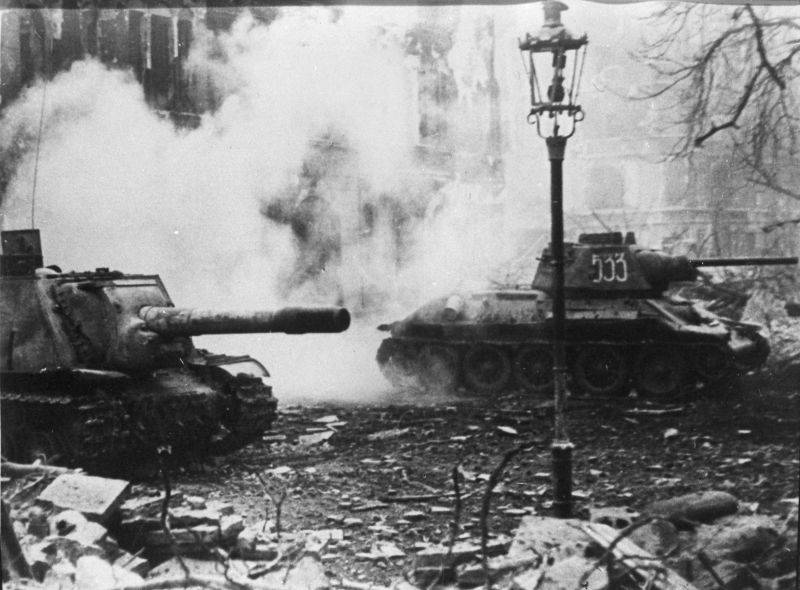
Highly effective 152 mm high-explosive fragmentation shells turned out to be in street battles. Hitting a projectile with a fuse on a high-explosive action in a two-story brick city house usually led to the collapse of the floor floors and interior walls. After the explosion of a 43,56-kg 53-OF-540 projectile containing almost 6 kg of TNT, only half-destroyed external walls often remained from the building. Thanks to the relatively short gun barrel, the 152-mm self-propelled guns maneuvered quite freely on the cramped streets of European cities. In the same conditions, the crews of self-propelled guns SU-85, SU-100 and ISU-122 were much more difficult to act.
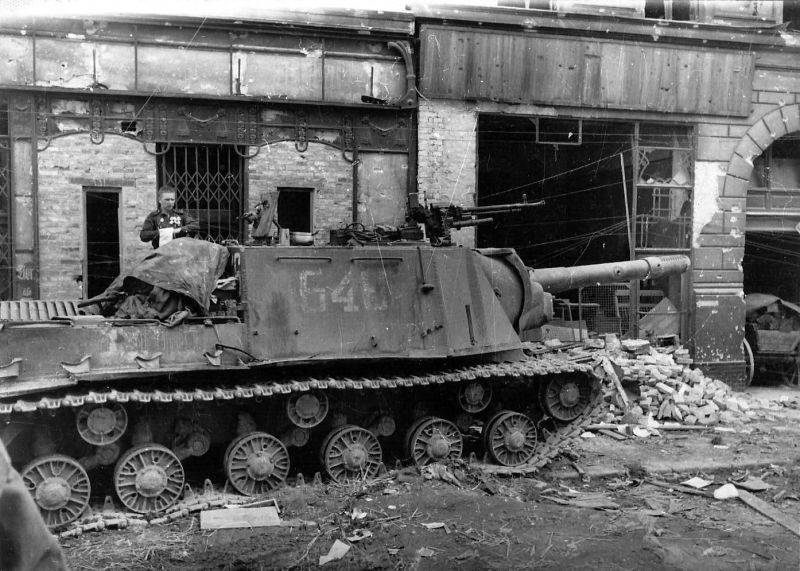
From the statistics of the combat use of ISU-152 it follows that most often self-propelled guns fired at the enemy fortifications and manpower. The enemy’s armored vehicles, as soon as they appeared in the gunner’s field of vision, instantly became a priority target.
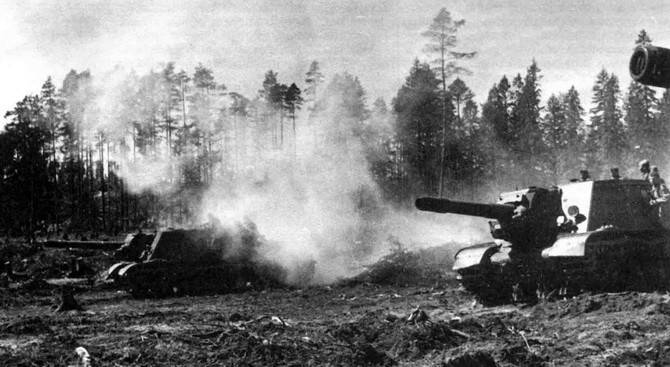
As a self-propelled howitzer, the ISU-152 was rarely used during the war. This was due to the difficulty in controlling the fire of self-propelled guns, as well as the fact that when firing from closed positions the self-propelled guns were inferior to the towed howitzer gun ML-20 with a maximum vertical guidance angle of 65 °. At an elevation angle of 20 ° the 152-mm ML-20S gun could not fire along hinged trajectories with high steepness. This significantly narrowed the scope as a self-propelled howitzer. The supply of shells from the ground during the shooting was difficult, which negatively affected the practical rate of fire. The ISU-152 demonstrated the best efficiency precisely in the role of an assault gun mount, shooting at visually observable targets. In this case, the consumption of shells when performing the same task was many times less than when the self-propelled gun fired from a closed position.
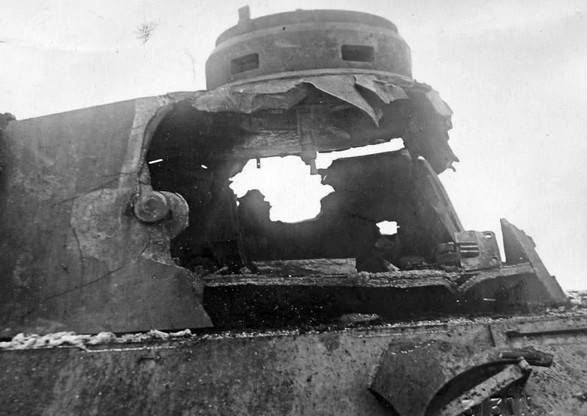
As for the anti-tank capabilities of domestic 152-mm self-propelled guns, they are very greatly exaggerated. There were no vehicles in the Panzerwaff capable of withstanding the penetration of an armor-piercing projectile 53-BR-540 weighing 48,9 kg with an initial speed of 600 m / s. At the same time, taking into account the fact that the range of a direct shot at a target with a height of 3 m from the ML-20C gun was 800 m, and the combat rate of fire was no more than 1,5 rounds / min, in practice, the SU-85 self-propelled guns showed much better . A much cheaper self-propelled gun, built on the T-34 chassis and armed with an 85 mm cannon, was able to make up to 6 rounds / min. At a distance of 800 m, an 85 mm armor-piercing projectile with a high probability pierced the frontal armor of the Tiger. At the same time, the silhouette of the SU-85 was lower, and mobility is better. In a duel situation, the crew of the Tiger or Panther had a much greater chance of victory than the Soviet 152-mm self-propelled guns.
Self-propelled guns with 152 mm guns could successfully operate against medium and heavy tanks with long-barrel 75-88 mm guns only from an ambush. At the same time, there are many examples of successful firing of high-explosive shells at enemy tanks at a distance of up to 3800 m. In this case, several self-propelled guns fired at the enemy, as a rule. With a direct hit of a shell in an enemy tank, even if there was no penetration of the armor, it probably received heavy damage. The close burst of a heavy projectile disrupted the undercarriage, weapons and optics. Having fallen under the shelling of 152-mm HE shells, the enemy tanks in most cases hastily retreated.
At the final stage of the war, ISU-152 became one of the most effective means of hacking the enemy’s long-term defense. Although self-propelled guns, with competent tactics of use, suffered less losses than tanks, in the offensive they sometimes came across anti-tank artillery, operating from ambushes, 88-105-mm anti-aircraft guns mounted on the front line of defense and German heavy tanks.
In 1943, the ChKZ delivered 35 ISU-152 to the military, and in 1944 - 1340 self-propelled guns. ISU-152, together with SU-152 and ISU-122, went to form heavy self-propelled artillery regiments. From May 1943 to 1945, 53 TSAPs were formed. Each regiment had 4 batteries of 5 self-propelled guns. The control platoon also had an IS-2 tank or a regiment commander’s self-propelled gun. In December 1944, to provide fire support to tank armies, the formation of guards heavy self-propelled artillery brigades began. Their organizational structure was borrowed from tank brigades, the number of vehicles in both cases was the same - 65 self-propelled guns or tanks, respectively. For the whole of 1944, 369 vehicles were irretrievably lost at the front.
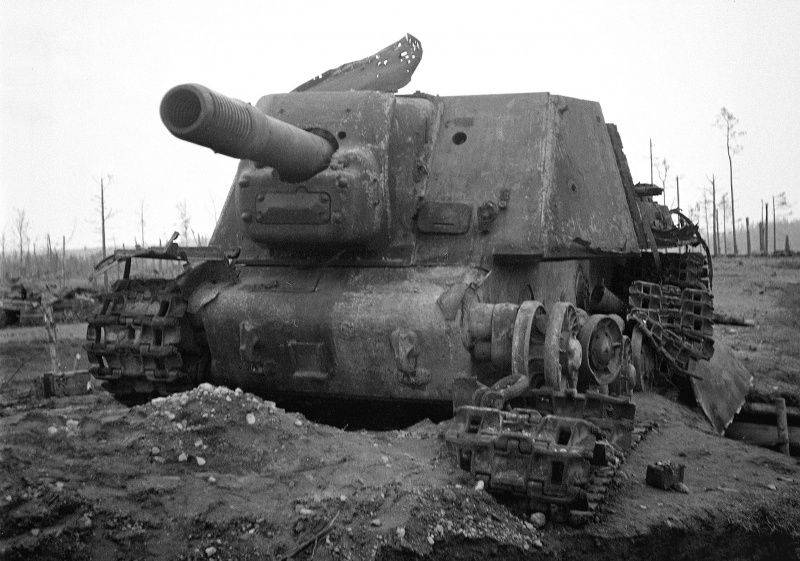
Taking into account the fact that not all self-propelled guns built in 1944 fell to the front, and some of the vehicles were in training units, it can be assumed that among the ISU-152 participating in the battles in 1944, the losses amounted to more than 25%.
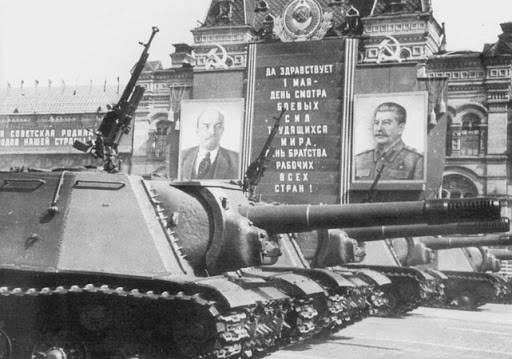
From November 1943 to May 1945, 1840 ISU-152 was built. The production of self-propelled guns ended in 1947. In total, the military took 2825 cars. In the post-war period, the ISU-152 was repeatedly modernized. They served in the Soviet Army until the mid-1970s, after which they were put into storage. Some of the vehicles were converted into tractors and mobile launchers of tactical missiles. Many self-propelled guns have completed their journey in the role of targets at landfills. It is reliably known that the self-propelled gun ISU-152 was used in the aftermath of the Chernobyl accident in 1986.
The ending should ...
- Linnik Sergey
- Soviet self-propelled guns against German tanks in the initial period of the war
Antitank capabilities of Soviet 76,2 mm self-propelled artillery mounts
Antitank capabilities of Soviet 122 mm self-propelled artillery mounts
Antitank capabilities of the Soviet self-propelled artillery mount SU-85
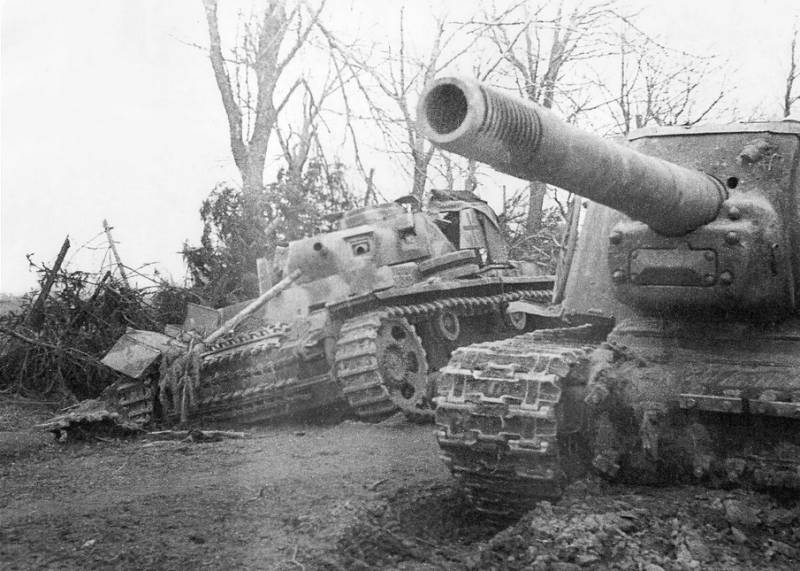
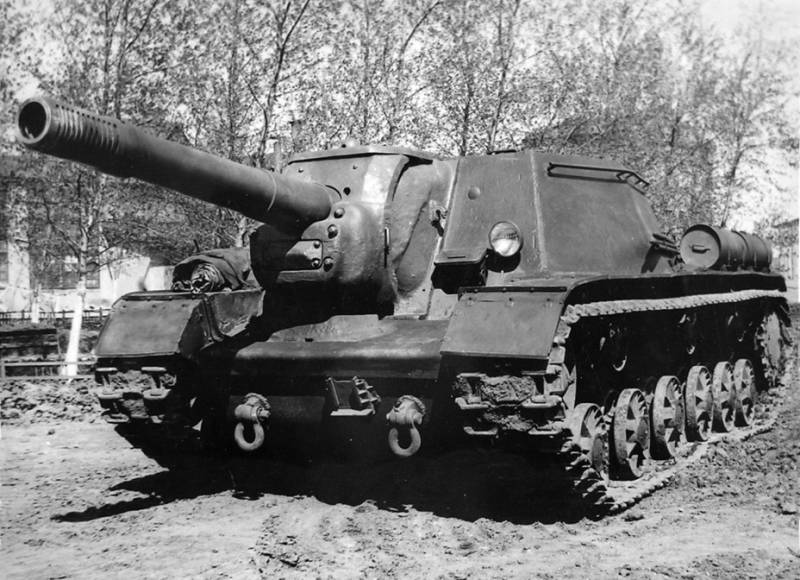
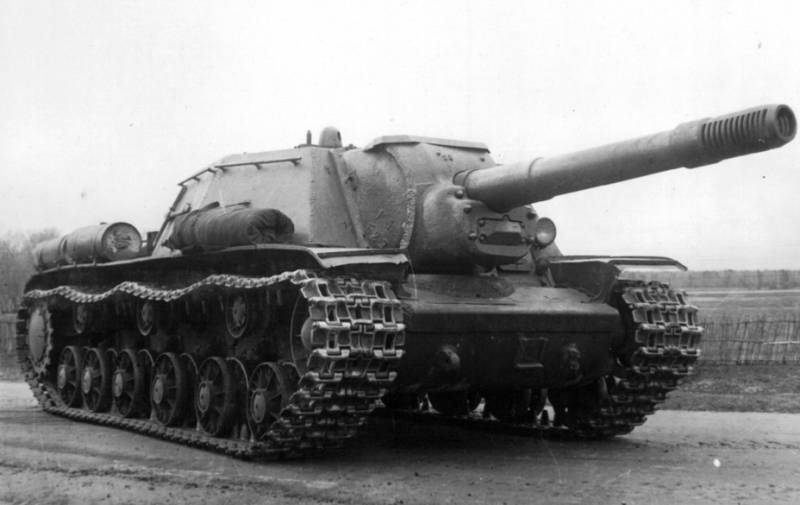
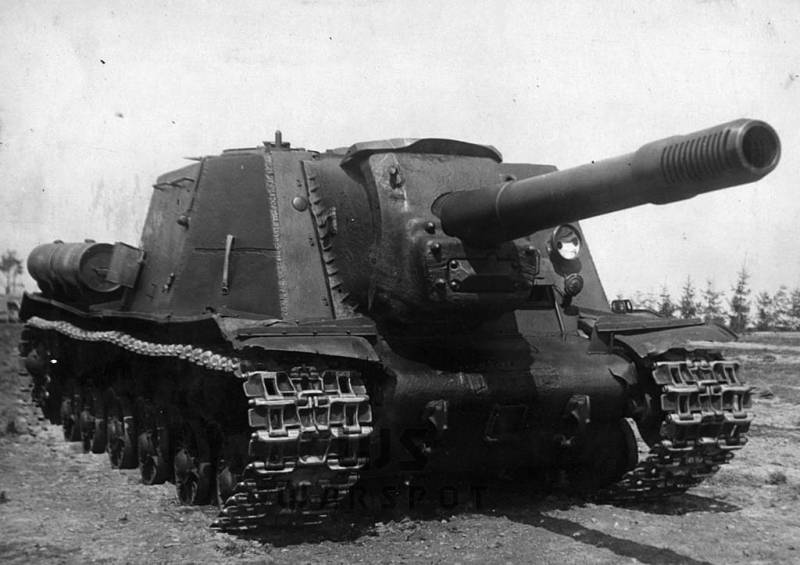
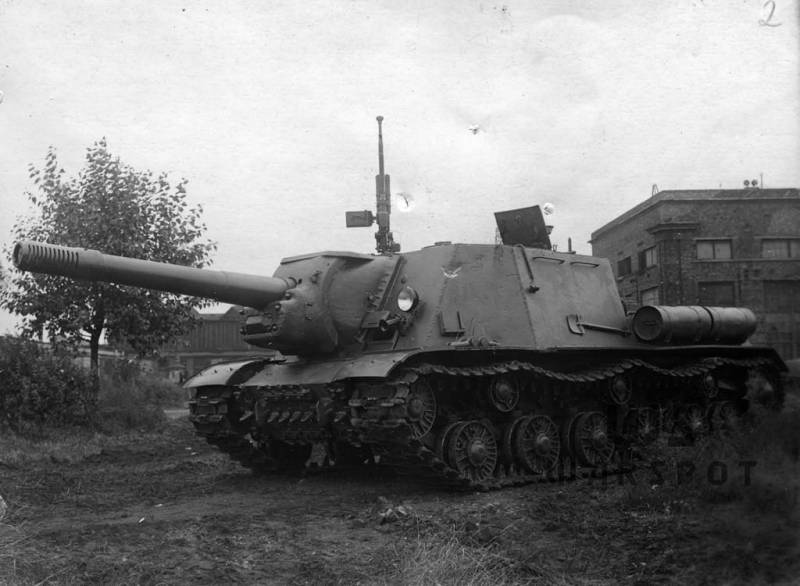
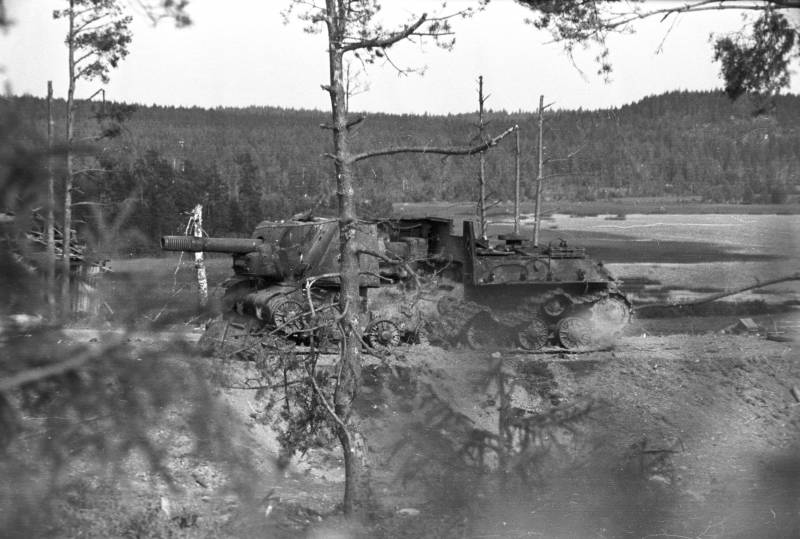
Information